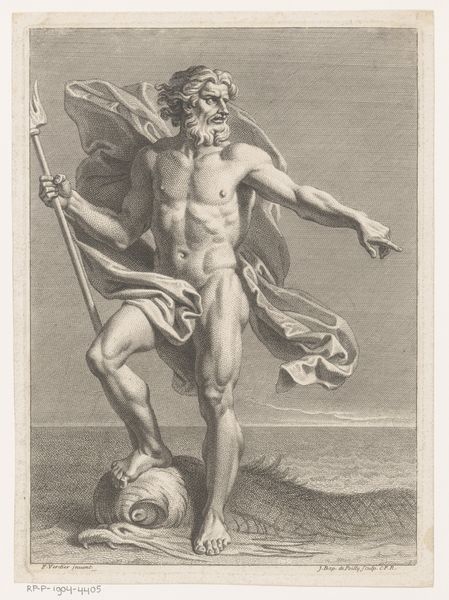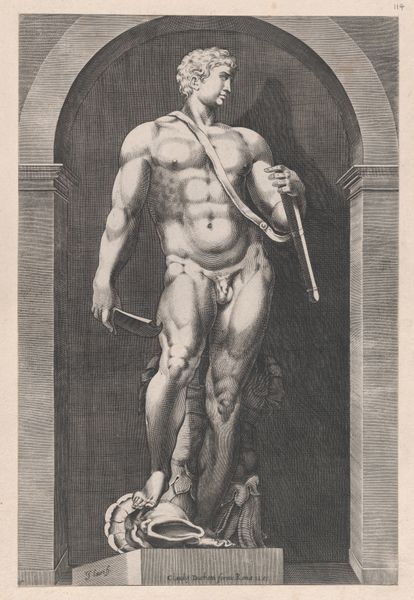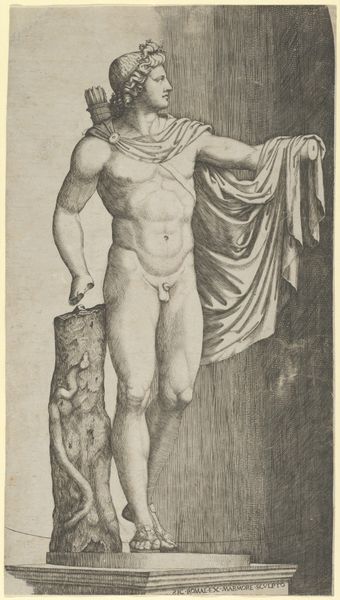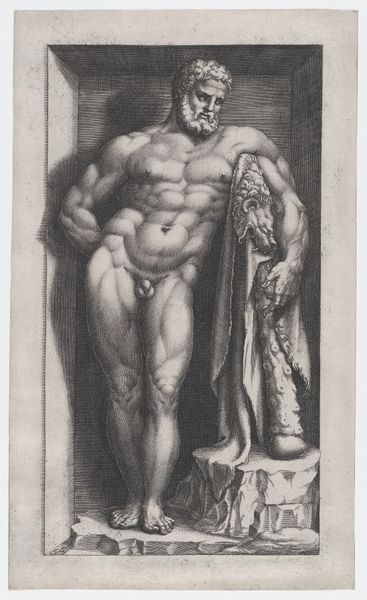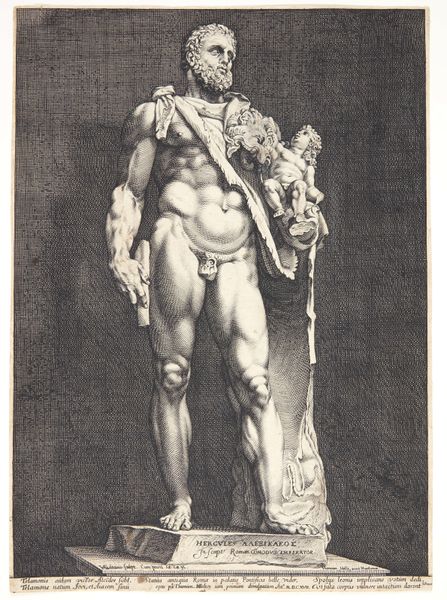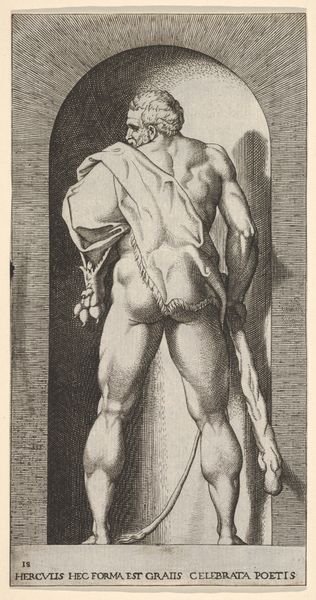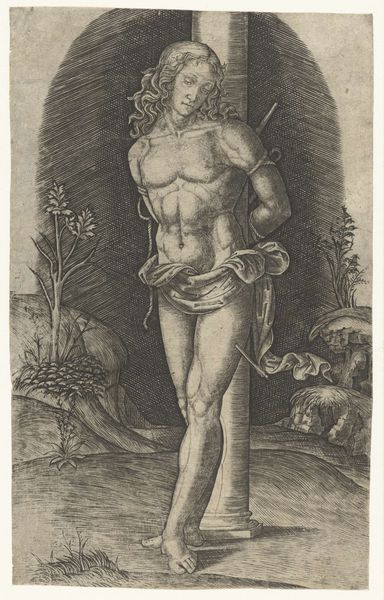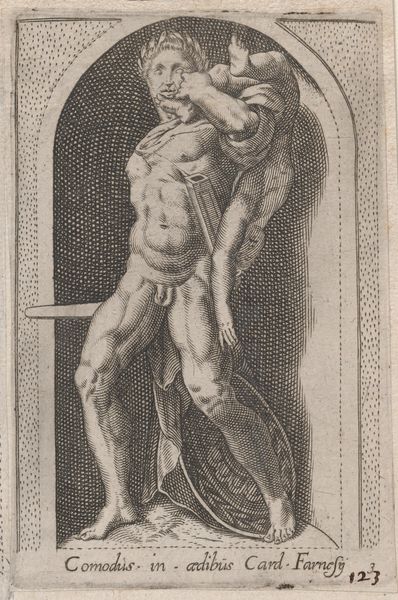
engraving
#
portrait
#
baroque
#
figuration
#
line
#
portrait drawing
#
history-painting
#
engraving
Dimensions: 432 mm (height) x 209 mm (width) (bladmaal)
Curator: Standing before us is an engraving entitled "The Resurrection," dating sometime between 1609 and 1672. It’s currently held in the collection of the SMK, the Statens Museum for Kunst. Editor: Well, the initial impact is quite arresting. The stark contrast of the lines certainly creates a dramatic and somewhat theatrical tableau. Curator: The use of line is indeed masterful here. Look at how the engraver delineates Christ's musculature. The artist employs the incisive strokes of the medium to amplify a specific interpretation of the divine human form. Editor: But how does that presentation function ideologically? The pronounced anatomy, that flag planted triumphantly—it speaks volumes about power, dominion, perhaps even a militaristic, exclusionary vision of Christianity that serves to enforce specific power structures. The image exudes this concept of triumph and the suppression of different interpretations or even doubt. Curator: I understand the urge to position it that way. However, observe how the artist contrasts that muscularity with a certain vulnerability – the slight downward gaze, the exposed wounds. It adds a layer of complexity. The artist has used contrasting textures. Editor: And let’s not ignore what lies beneath: a cluster of skeletal remains and what appears to be the grotesque figure of a defeated devil—all symbolically crushed under the weight of this "triumph." Who paid for it? Whose interpretations and identities were suppressed or simply erased so that the power relations embodied in this image could solidify their authority? Curator: A point well taken. However, when analyzing the art form itself and considering the limitations, an engraver could work, the virtuosity in depicting textures and forms through line alone is compelling. Note also the subtle suggestion of light emanating from Christ, a divine illumination achieved entirely through variations in line density. Editor: Perhaps it serves as a stark reminder that narratives of triumph always cast shadows—that behind every resurrection lies a story of violence and systemic oppression. To confront such an image compels us to dissect how art, throughout history, has been so thoroughly weaponized as an apparatus of domination. Curator: So, beyond the lines and forms lies a deep pool for thought. Editor: Absolutely. And hopefully prompts a broader discussion about its impact on our shared present.
Comments
No comments
Be the first to comment and join the conversation on the ultimate creative platform.
